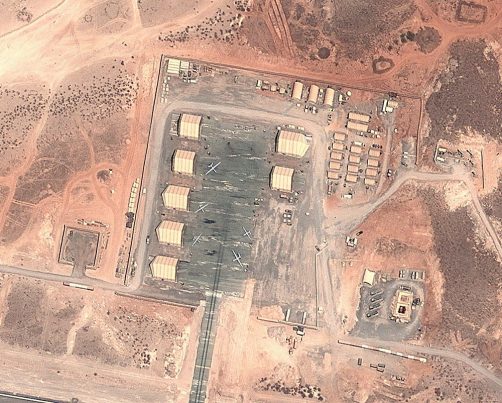
Secret drone base in Africa deemed ‘vital’ to war on ISIS
Monday, November 02, 2015 by usafeaturesmedia
http://www.nationalsecurity.news/2015-11-02-secret-drone-base-in-africa-deemed-vital-to-war-on-isis

(NationalSecurity.news) Few know of its existence and, until recently, its purpose, but experts say it is a vital asset in the ongoing war against the Islamic State of Iraq and Syria and the terrorist army’s allies.
As reported by The Intercept, a “hive of high-priced, high-tech American hardware” is based at a remote location in Djibouti known as Chabelley Airfield, and from there, the U.S. military conducts its drone war against ISIS throughout the region – an “enduring” base that is key to a secretive war run by the U.S. military’s Joint Special Operations Command (JSOC) throughout North Africa and the Middle East.
Understandably, the Pentagon has not publicly discussed the base and its operations, even going so far as to keep it off a public list of overseas bases[PDF] and refusing to acknowledge questions about the facility. Nevertheless, as The Intercept notes, experts, documents and satellite imagery all suggest that the base is essential to the United States’ secretive drone operations in the region.
“This base is now very important because it’s a major hub for most drone operations in north[east] Africa,” Tim Brown, a senior fellow at GlobalSecurity.org and expert on analyzing satellite imagery, told the publication. “It’s vital. … We can’t afford to lose it.”
He further noted that Chabelley Airfield gives the Pentagon the capability of utilizing drones against targets in Yemen, southwest Saudi Arabia, a major swath of Somalia and portions of Ethiopia and southern Egypt.

April 2013 – Photo: Google Earth

October 2013 – Photo: Google Earth

March 2015 – Photo: Google Earth
As seen in the photos above (via Google Earth) the base has undergone a remarkable transition, from little-used remote outpost to a bustling – and growing – hub of activity, all mostly under the radar in Africa where missions, outposts and JSOC operations have grow dramatically in recent years.
The Intercept notes further:
The expansion of Chabelley and its consequent rise in importance to the U.S. military began in 2013, when the Pentagon moved its fleet of remotely piloted aircraft from its lone acknowledged “major military facility” in Africa — Camp Lemonnier, in Djibouti’s capital, which shares the country’s name — to this lower-profile airstrip about 10 kilometers away.
As The Washington Post notes, the decision to move the base came in large part over fears that, after six drone crashes, officials believed they may inadvertently disrupt or even collide with commercial aircraft.
- Have you ‘liked’ NationalSecurity.news on Facebook? Click here!
Once at Chabelley, perimeters were built of concertina wire and metal fence posts around a compound that was once used by forces belonging to the French Foreign Legion. At the time, the Pentagon requested just enough funds to establish only “minimal facilities” that could support “temporary operations” for no more than two years. In the ensuing years, however, Chabelley – like Lemonnier before it – underwent massive expansion, and now serves as the principle U.S. installation in the region as the Obama administration ramps up covert operations aimed at dismantling ISIS.
Dan Gettinger, the co-founder and co-director of the Center for the Study of the Drone at Bard College and the author of a guide to identifying drone bases from satellite imagery, told The Intercept: “It seems they started with two CAPs — combat air patrols — about seven aircraft, a mix of Predators and Reapers. And since then, we’ve really seen expansion, particularly within the last couple months; a few more hangars and certainly a lot more facilities for personnel at Chabelley.”
Brown, of GlobalSecurity.org, said Chabelley allows the U.S. to keep tighter wraps on its drone campaign.
“They’re able to operate with much less oversight — not completely in secret — but there’s much less chance of ongoing observation of how often drones are leaving and what they’re doing,” he told the publication.
- Check out our ‘I Serve No Man’ merchandise collection at the NationalSecurity.news Commissary!
See also:
Tagged Under: Tags: Africa, Djibouti, drone assassination, secret base, United States, War on Terror






